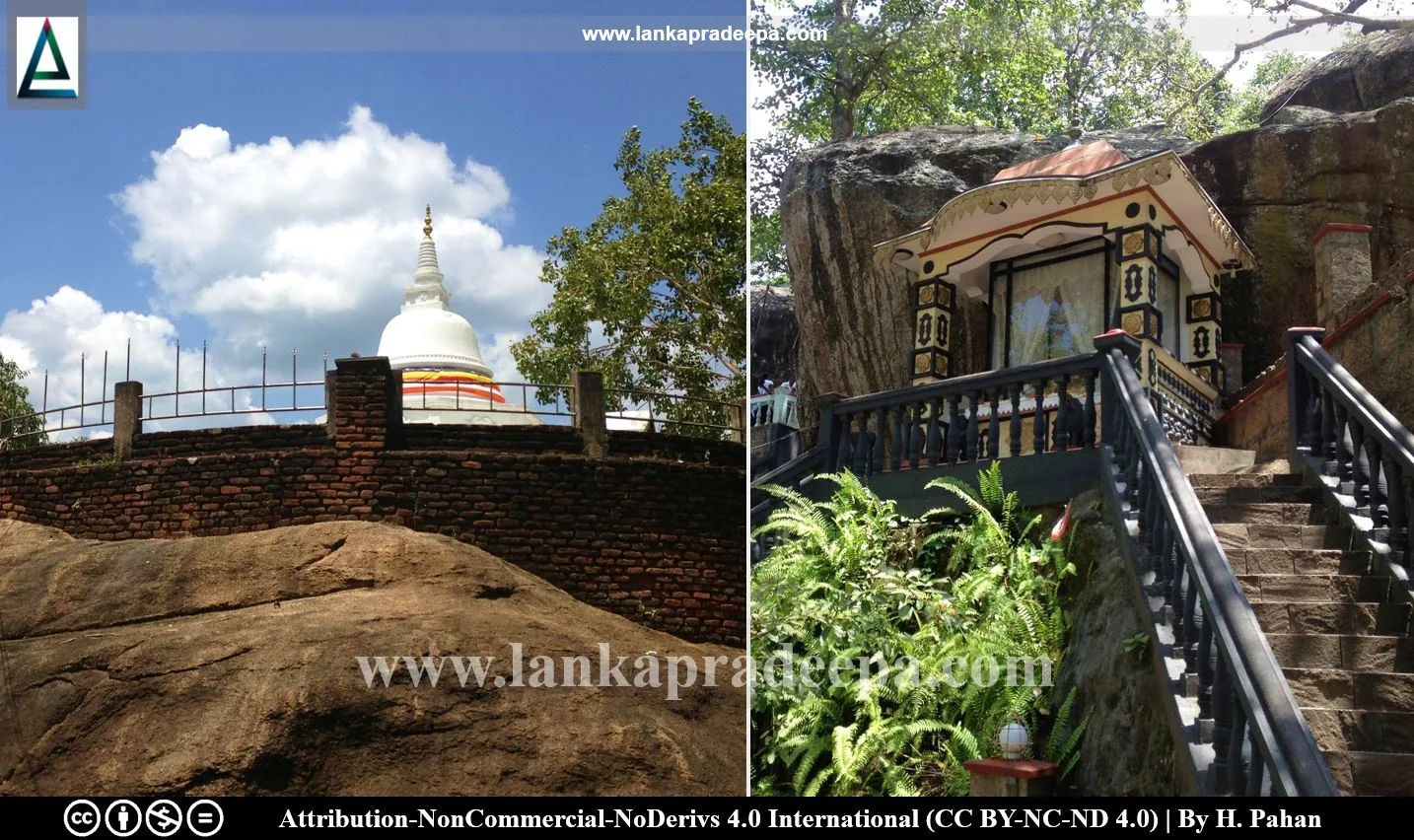
Sankhapala Raja Maha Viharaya (Sinhala: පල්ලෙබැද්ද ශ්රී සංඛපාල පුරාණ විහාරය) is a Buddhist temple situated in Pallebedda village in Ratnapura District, Sri Lanka.
History
As the presence of a few Early Brahmi Cave Inscriptions, the history of this temple can be dated back to the period of the pre-Christian era (Paranavitana, 1970). According to popular beliefs, Phussadeva, one of the paladins of King Dutugemunu (161-137 B.C.) had entered the order of monks after the conclusion of the Elara war and attained Arhatship at this temple (Abeyawardana, 2002).
A Tudapatha granted to this temple by King Sri Rajadhi Rajasinha (1781-1798 A.D.) in Saka year 1708 (1786 A.D.) reveals an offering (a land grant) made to a Buddhist monk named Karatota Dhammarama Thera in appreciation of his unique poetic composition known as Barasakavya (Abeyawardana, 2002; Collins, 1932).
Inscriptions
Three early Brahmi cave inscriptions belonging to the period between the 2nd-1st century B.C. have been found in the Sankhapala temple premises (Collins, 1932; Paranavitana, 1970).
Script: Early Brahmi Language: Old Sinhala
Transcript: ..........[pu]ta-Pussadevasha lene shagasha
Translation: The cave of Phussadeva, son of ..........[is given] to the Sangha
Citation: Paranavitana, 1970. p.58.
Citation: Paranavitana, 1970. p.58.

Two of the three inscriptions found in this temple contain the name "Phussadeva" who is popularly identified by many with Phussadeva, one of the paladins of King Dutugemunu [(161-137 B.C.) Abeyawardana, 2002; Collins, 1932]. As mentioned in the chronicle Mahavamsa, Phussadeva is a warrior who skilled in chank-blowing and in archery (Collins, 1932). His main symbols were the Chank and the Arrow (Collins, 1932). The name "Sankha" in the Sinhala language means the "Chank" and therefore, the name of the present temple "Sankhapala" indicates some link between this place and the warrior Phussadeva (Collins, 1932). Also, some marks appear to be a chank and an arrow have been found on a rock near the entrance to the temple (Collins, 1932).
The temple
This monastic complex contains a cave temple, Stupa, stone pillars, flight of steps erected on a rocky platform (Abeyawardana, 2002). On one of the pillars, there is an engraving said to be of a Watapatha (a monk's fan), the Sun and the Moon, a crow and a dog and an ear of corn (Collins, 1932). A Stupa-shaped mound known as the Phussadeva tomb is found on a rock near the entrance of the temple.
A protected site
The tomb of Phussadeva and its nearby drip-ledged cave, and 15 drip-ledged caves with inscriptions situated on the premises of Sankhapala Vihara in Pallebedda village the Divisional Secretary’s Division of Embilipitiya, are archaeological protected monuments, declared by a government notification published on 22 November 2002.

.
References
1) Abeyawardana, H.A.P., 2002. Heritage of Sabaragamuwa: Major natural, cultural and historic sites. Sabaragamuwa Development Bank and The Central Bank of Sri Lanka. ISBN: 955-575-077-7. p.32.
2) Collins, C.H., 1932. The archaeology of the Sabaragamuwa Bintenna. Journal of the Ceylon Branch of the Royal Asiatic Society, Vol. XXXII, No 85. p.173-175.
3) Paranavitana, S., 1970. Inscription of Ceylon (Vol. I). Department of Archaeology Ceylon. p.58.
4) The Gazette of the Democratic Socialist Republic of Sri Lanka. No: 1264. 22 November 2002.
2) Collins, C.H., 1932. The archaeology of the Sabaragamuwa Bintenna. Journal of the Ceylon Branch of the Royal Asiatic Society, Vol. XXXII, No 85. p.173-175.
3) Paranavitana, S., 1970. Inscription of Ceylon (Vol. I). Department of Archaeology Ceylon. p.58.
4) The Gazette of the Democratic Socialist Republic of Sri Lanka. No: 1264. 22 November 2002.
Location Map
This page was last updated on 26 June 2022

